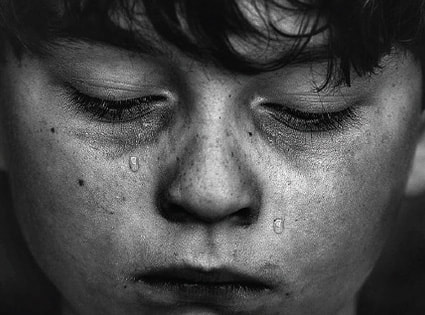The mental health of Hispanic children and adolescents is seriously deteriorating
The United States must face another devastating danger. A self-destructive psychological “pandemic,” suffered by thousands of Hispanic, Black, and Native American young children and adolescents. White Americans under the age of 24 are not safe either. But social inequalities make Hispanics and Blacks more vulnerable.American minors (under 18) have traded their traditional serious problems of alcoholism, drug use, smoking, sexually transmitted diseases and unwanted pregnancies for other disorders and self-destructive behavioral disturbances, more forceful and in much more alarming proportions.
It is a new “pandemic,” more difficult to detect and against which there are no vaccines. It acts without warning and, when it manifests itself, it may be too late. It pushes children to self-harm and brutally end their lives. Sol de Medianoche interviewed Mayra E. Alvarez, MHA (Minister of Home Affairs), appointed by President Joe Biden and Vice President Kamala Harris to the Health Equity Task Force, which advises them on achieving fairness and equal treatment in the healthcare system, especially as it relates to Covid-19. Hispanic, Black, and Native American children and adolescents are the most vulnerable to this new self-destructive psychological “pandemic,” which can affect children before they are even five years old and which, “in adolescents, has triggered Emergency Room interventions by more than 31%,” Mayra E. Alvarez tells our newspaper. “There are many factors that produce stress, anxiety, depression and other psychological disorders with fatal consequences in children,” says Mayra Alvarez. “For example, the remoteness of these migrant children from their origins and the rest of their family (grandparents, cousins, aunts and uncles, etc...); their difficulties to integrate into another society, with another culture, and another language. Also, by the confinement at home, because of Covid. Similarly, because of the closure of schools, which has forced them to follow classes online, isolated from all their classmates and friends, at an age when socialization is vital for their development and their emotional and psychological balance.” “In more than a few cases,” continues Mayra Álvarez, “these terrible psychological disorders are also due to the fact that they spend a lot of time at home, which turns these children and adolescents into unwitting witnesses of tensions between their mom and dad, and the arguments between them, or even to witness or be victims of abuse...” All these factors lead the child and adolescent to seek their own “escape routes,” and the ultimate escape from a tormenting environment is to end their lives, or try to. However, Mayra Alvarez recognizes that “the disproportionate increase in suicides, cases of depression and anxiety in the youngest has been occurring since before the coronavirus.” In 2018, official statistics for the population between the ages of ten and 24 showed suicide rates “skyrocketing” by nearly 60%, according to the Centers for Disease Control and Prevention. In 2019, hospital ER visits by children and adolescents with symptoms of anxiety, mood disorders and self-harm increased sharply. Thirteen percent of these children and adolescents acknowledged suffering from major depression and having had suicidal thoughts or temptations to self-harm. This is an increase of 60% in 2019, compared to the immediately preceding, more stable twelve years. “Another factor that deteriorates the psychological and emotional balance of the minor is that thousands of these children and adolescents have lost a close family member, their father, their mother or one of their grandparents because of Covid. The Biden-Harris Administration is working hard and is using significant funds to help in all these situations,” concludes Mayra Alvarez, although she has not been able to specify how much money these funds amount to. |
